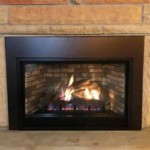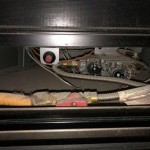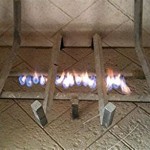How To Build Wall Shelves Around a Fireplace
Building wall shelves around a fireplace can significantly enhance a living space's aesthetic appeal and functionality. It creates a focal point, provides storage, and integrates the fireplace seamlessly into the room's design. This detailed guide outlines the process of designing, planning, and constructing wall shelves around a fireplace, ensuring a professional and visually appealing result.
Before commencing any construction, a comprehensive assessment of the project's feasibility and design is crucial. This involves considering the fireplace's construction, local building codes, and the desired aesthetic.
Planning and Design Considerations
The initial stage involves a thorough examination of the fireplace itself. Determine the material (brick, stone, or drywall), its dimensions (width, height, and depth), and its overall structural integrity. Identifying these factors will influence the shelving design and the method of attachment. For instance, attaching shelves directly to brick or stone requires specialized anchors and drilling techniques compared to drywall. Furthermore, consider the fireplace's heat output. Wood shelves placed too close to the firebox can pose a fire hazard or warp over time. Local building codes often specify clearance requirements between combustible materials and the fireplace. Adhering to these codes is paramount for safety and legal compliance.
Once the fireplace is assessed, the design stage begins. This involves deciding on the number of shelves, their dimensions, the spacing between them, and the overall style. Consider the room's existing décor style. Shelves can be modern, rustic, traditional, or eclectic, and the design should complement the existing elements. Draw sketches or use design software to visualize different options. This allows for experimentation and refinement of the design before any materials are purchased. The placement of electrical outlets and light fixtures should also be considered to avoid obstructions during the construction phase. If wiring needs to be rerouted, consult a qualified electrician.
The dimensions of the shelves should be carefully planned based on their intended use. Deeper shelves can accommodate larger items, while narrower shelves are better suited for displaying decorative objects. The spacing between the shelves should also be considered, with adequate headroom to prevent items from feeling cramped. It is advisable to measure the frequently used items on the shelves to ensure the right spacing for a seamless look. Consider the overall weight capacity of the shelves as well. Dense hardwood shelves, for instance, can be used to handle heavier decorative items, while lighter shelves can be used for lightweight items. This consideration will help determine the shelf material and support system needed to ensure the shelves will not sag over time.
The material choice significantly impacts the overall look and durability of the shelves. Common materials include solid wood (oak, maple, pine), plywood, MDF (medium-density fiberboard), and laminate. Solid wood offers a rich, natural appearance but can be more expensive and prone to warping if not properly seasoned. Plywood is a cost-effective option that provides good strength and stability. MDF is a smooth, paintable surface that is ideal for contemporary designs. Laminate offers a durable and water-resistant surface that is easy to clean. Each material has its pros and cons, and the selection should be based on budget, desired aesthetic, and intended use.
When deciding on a material, remember to keep the overall finish in mind as well. Will the shelves be painted? Stained? Consider what type of finish will look best in the location and how well you are able to perform the finishing work. You may choose to purchase pre-finished materials to save time and labor in this step.
Preparing Necessary Tools and Materials
After finalizing the design, gather all necessary tools and materials. Essential tools include a measuring tape, pencil, level, stud finder, drill with various drill bits, screwdriver, saw (circular saw or hand saw), sandpaper, safety glasses, and a dust mask. A miter saw is also highly recommended for making precise cuts, particularly for angled shelves or trim. In addition to the shelving material, you will need appropriate hardware to secure the shelves to the wall. This includes screws, anchors (for drywall or brick), and shelf supports (brackets or cleats). The type of anchors will depend on the wall construction. Drywall anchors are suitable for drywall, while masonry anchors are needed for brick or stone. High-quality anchors are essential for ensuring the shelves are securely attached and can support the intended weight.
Safety should be a primary concern. Always wear safety glasses to protect your eyes from dust and debris. A dust mask is essential to prevent inhalation of wood particles, particularly when sanding or cutting MDF. Work in a well-ventilated area to minimize exposure to paint fumes or solvent vapors. Use caution when operating power tools, and always follow the manufacturer's instructions.
The quantity of materials should be carefully calculated based on the dimensions of the shelves. It is advisable to purchase slightly more material than needed to account for mistakes or adjustments. Ensure that the shelving material is straight and free from defects. Warped or damaged material can compromise the structural integrity of the shelves. Upon receiving the materials, store them properly until ready to use. Solid wood should be acclimatized to the room's humidity to prevent warping or cracking. This involves storing the wood in the room for several days before construction.
Consider purchasing paint, stain, or varnish to finish the shelves. Choose a finish that will complement the room's décor and provide adequate protection to the shelves. Water-based finishes are generally less toxic and easier to clean than oil-based finishes. A primer may be needed to prepare the surface for painting or staining. Select the appropriate type of primer for the material being used. Always follow the manufacturer's instructions for applying the finish.
Step-by-Step Construction Process
The construction process begins with accurately measuring and marking the shelf locations on the wall. Use a stud finder to locate the wall studs. Securing the shelves to the studs provides the strongest support. Mark the stud locations with a pencil. Use a level to ensure the shelves are horizontal. Draw a level line along the wall at the desired height of each shelf. If studs are not available at the desired location, use appropriate drywall or masonry anchors to secure the shelves. Ensure the shelves are perfectly aligned to create a visually appealing and functional design. Any misalignments will be highly noticeable when the shelves are loaded with items.
Cut the shelving material to the required dimensions using a saw. If using a circular saw, use a guide to ensure straight cuts. If using a miter saw, set the angle to the required setting for angled shelves or trim. Sand the edges of the shelves to remove any splinters or rough spots. This will create a smooth, professional finish. Apply the desired finish to the shelves. If painting, apply a primer first, followed by two coats of paint. If staining, apply the stain evenly and wipe off any excess. Allow the finish to dry completely before installing the shelves. Choose the best finishing options based on the choice of material during earlier planning stages.
Install the shelf supports. If using brackets, attach them to the wall studs or using appropriate anchors. Ensure the brackets are level and securely fastened. If using cleats, attach them to the wall studs or using appropriate anchors. The cleats should be the same thickness as the shelving material to create a flush surface. Position the shelves on the supports and secure them with screws or nails. Ensure the shelves are level and securely attached. Inspect the shelves for any gaps or imperfections. Fill any gaps with wood filler or caulk. Touch up the finish as needed. This will ensure a seamless and professional look.
Once the shelves are installed, consider adding trim or molding to enhance their appearance. Trim can be used to conceal the shelf supports or to create a more decorative look. Install the trim using nails or adhesive. Paint or stain the trim to match the shelves. A small amount of decorative trim can make the shelves look like a seamless part of the wall, completely changing the look of the shelves and the fireplace.
After all the steps are complete, conduct a final inspection to ensure the shelves are level, secure, and aesthetically pleasing. Load the shelves with items and observe their stability. If any sagging or instability is detected, reinforce the supports or adjust the load. Adhere to all safety precautions to prevent accidents or injuries. A properly constructed set of wall shelves can transform a fireplace into a stunning focal point.

White Built In Bookshelves Around The Fireplace Green With Decor

How To Build Easy Custom Built In Shelving Basic

White Built In Bookshelves Around The Fireplace Green With Decor

Shelves And Built Ins On Either Side Of The Fireplace In Living Room Home

Diy Built Ins Part 2 Withheart

Diy Fireplace Surround And Built Ins Our Blessed Life

How To Design And Build Gorgeous Diy Fireplace Built Ins The Sweetest Digs

Diy Built In Cabinets Around The Fireplace Part 2 Honeybear Lane
Diy Fireplace Surround And Built Ins Our Blessed Life

Faux Shiplap Fireplace And Custom Shelves All Things With Purpose








